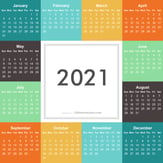 by Lynda McDaniel, Your Inspired Writing Coach, and People-OnTheGo Faculty Member
by Lynda McDaniel, Your Inspired Writing Coach, and People-OnTheGo Faculty Member
We love to use e-mail because it's fast and easy. We also complain about e-mail because it’s fast and easy. The speed of e-mail too often means irritating, typo-filled messages that don’t get to the point quickly (the number one pet peeve in surveys of e-mail recipients.)
What’s wrong?
Some problems with e-mail stem from the challenge of all written words: no gestures, no facial expressions, no eye contact or tone of voice to support the message. Without the twinkle in the eye or the pat on the back, the reader may misinterpret the meaning of the words.
The speed of e-mail also contributes to its problems. Because we can send it fast, we think we should write it fast, dashing off messages without editing or proofing. Otherwise, it's not fast, is it? As a result, huge blocks of sloppy, rambling copy clog our inboxes.
Only to be deleted.
![]() I was amazed when I learned that at least half my students and clients freely admit to deleting e-mails they don’t like the looks of. When I asked what they said if asked about the message, they shrugged and answered, "We just say we didn't receive it." Ouch! All that work, but no one reads it.
I was amazed when I learned that at least half my students and clients freely admit to deleting e-mails they don’t like the looks of. When I asked what they said if asked about the message, they shrugged and answered, "We just say we didn't receive it." Ouch! All that work, but no one reads it.
What's right?
Let’s look at how you can overcome these challenges to write effective e-mail that get the results you need.
-> Sign up for our Business E-mail Writing webinar on April 10, 2014.
1. Subject line
You have only 10 seconds to grab your potential readers’ attention, so be sure to craft subject lines from their perspective. Include benefits they can relate to. For example, which of these would you open?
Carpet repair today or Early closing today
The writer wanted her staff to leave at 2:00 p.m. because the office would close early for carpet repairs. She sent the subject line on the left and was surprised to see everyone still working at 2:10 p.m. Her subject line didn’t pass the “What’s in it for me?” (WIIFM?) test. No one read it. If she’d sent the second version, everyone would have left at 1:59 p.m.
2. Get to the point quickly
Make sure your first paragraph informs your readers about the reason for your e-mail. Summarize your topic and then go into detail. Remember: everyone is asking WIIFM?
3. Write to your readers, not at them
Don’t just data dump. Tell stories, benefits, and results through your readers' eyes. Use the word "you" often to engage them. "You" is a proven magnet that keeps people reading.
4. End with impact
Leave a lasting impression and make your expectations known. E-mail offers fast calls to action—just tell your readers to hit reply, click a link, download a document. Finally, let them know what the next steps are—you’ll call, they need to call or RSVP. And include your contact information. No contact information is another high-ranking pet peeve.
We'll go into detail on all these points—plus many more in my upcoming Business E-mail Writing webinar on April 10, 2014.
-> Click now for more details on the webinar.








